
When I was young, I knew that I was different from other boys my age. I was not quite sure, however, of the meaning or nature of that difference, but clues began to emerge mainly through my relationship to images of the dominant culture. I distinctly remember at the age of 5 or 6 watching an episode of
Star Trek in which Captain Kirk is shirtless. He displays the required smooth chest of the period. The episode revolves around an angry teenage boy named Charlie who has the habit of hurting people. No matter, the important point is not the episode’s particular narrative, but the scopophilic pleasure of a half-naked, young William Shatner. When I saw this image, I felt warm and tingly. Of course, I did not know what this sensation and feeling exactly meant. And even though I liked it, I did know that I should keep such an emotion secret and only relish it in private.
Captain Kirk was my first boy crush and my first queer experience that foreshadowed all the fabulousness that was yet to come. Now, don’t think I did not experience difficulty in coming to terms with my sexuality, but it never truly daunted or worried me, nor did I truly pretend to be something I was not. In many ways, I cherished my difference and queerness at first when it was just a private adventure and then after I came out at the age of 18.
In the summer of 1975, having just turned 8, my parents and I moved to suburban New Jersey from Brooklyn. That last summer in Flatbush, I discovered my second boy crush when I saw the maverick Chuck Heston as Colonel Taylor in
Planet of the Apes. The film was playing at a revival house along with the last movie in the
Ape series,
Battle for the Planet of the Apes. The first
Ape film is an amazing science fiction story which holds up well even today. But for me, beyond the narrative of Earth’s future, it was the spectacle of Mr. Heston with his beard and hairy torso that engaged me. He became my new object of desire- a desire that has continued until today despite Chuck’s unfortunate “From my cold dead hands” remark about guns and gun control soon after the Columbine tragedy.
Needless to say, my fixation on Captain Kirk/William Shatner waned when confronted by the awesome image of Chuck Heston in
Planet of the Apes, sweaty and naked, jumping into a lake near Ape City. Captain Kirk cannot top Chuck either physically or in terms of acting ability. Heston’s other films like the historical epic
Ben-Hur and the film noir
Touch of Evil along with his other scifi masterpieces besides
Planet of the Apes,
Soylent Green and
The Omega Man are all intriguing, good films. And lucky for me as a young, queer boy Chuck’s films usually featured him shirtless at one moment or another. His rugged handsomeness continued throughout his life unlike Shatner who got a bit pudgy and had that unfortunate hairdo, perhaps real, perhaps not. But I digress…


Besides fostering my lifelong love of Chuck Heston,
Planet of the Apes became one of my favorite movies because of the narrative and the impeccable ape makeup. I had all the
Planet of the Apes dolls, I mean action figures, and play sets that were produced. With the dolls Cornelius and Zira, I could not only reenact the story of Earth’s future, but also play house because of their humanity and the fact that they were married. Playing house with dolls is a decidedly non-boy thing to do, but I was able to do it with my non-human, scifi couple.
To achieve this end I built a 5-room doll house out of old cardboard boxes and scraps of fabric, wood, linoleum, wallpaper and carpet in order to shelter my simian lovebirds. My parents to their credit did nothing to dissuade me from constructing my chimpanzee love nest and even helped out. My mother assisted with the decor providing scraps of fabric, wallpaper and so on from the decorating of her own house. My father who worked in office furnishing at the time brought home pieces of leather and commercial carpet samples. Cornelius and Zira’s living room featured an L-shaped sofa in a tan leather with burgundy leather trim. While such a decorating aesthetic horrifies my current 19th century sensibilities, it was the late 70’s and I was only 9 or so and had not yet developed my own sense of style and taste. There was also faux wood paneling in Cornelius and Zira’s bedroom, a linoleum floor in the kitchen and every room had paintings and a clock on the wall cut out from magazines and catalogs. This doll house was a testament to my queer ingenuity and creating it was a symbol of my secret life where Chuck wandered around bare-chested.
Also in 1975, I experienced a pivotal TV moment of my young life: the debut of
Wonder Woman starring Lynda Carter. It is fascinating to me now how I constructed my queer identity through the images of the dominant culture such as Captain Kirk, Chuck Heston,
Planet of the Apes and
Wonder Woman. But, I also redeployed these representations, giving them new meanings that directly allowed me to form a positive relationship to my own same-sex desire.
 When I was young, I knew that I was different from other boys my age. I was not quite sure, however, of the meaning or nature of that difference, but clues began to emerge mainly through my relationship to images of the dominant culture. I distinctly remember at the age of 5 or 6 watching an episode of Star Trek in which Captain Kirk is shirtless. He displays the required smooth chest of the period. The episode revolves around an angry teenage boy named Charlie who has the habit of hurting people. No matter, the important point is not the episode’s particular narrative, but the scopophilic pleasure of a half-naked, young William Shatner. When I saw this image, I felt warm and tingly. Of course, I did not know what this sensation and feeling exactly meant. And even though I liked it, I did know that I should keep such an emotion secret and only relish it in private.
Captain Kirk was my first boy crush and my first queer experience that foreshadowed all the fabulousness that was yet to come. Now, don’t think I did not experience difficulty in coming to terms with my sexuality, but it never truly daunted or worried me, nor did I truly pretend to be something I was not. In many ways, I cherished my difference and queerness at first when it was just a private adventure and then after I came out at the age of 18.
In the summer of 1975, having just turned 8, my parents and I moved to suburban New Jersey from Brooklyn. That last summer in Flatbush, I discovered my second boy crush when I saw the maverick Chuck Heston as Colonel Taylor in Planet of the Apes. The film was playing at a revival house along with the last movie in the Ape series, Battle for the Planet of the Apes. The first Ape film is an amazing science fiction story which holds up well even today. But for me, beyond the narrative of Earth’s future, it was the spectacle of Mr. Heston with his beard and hairy torso that engaged me. He became my new object of desire- a desire that has continued until today despite Chuck’s unfortunate “From my cold dead hands” remark about guns and gun control soon after the Columbine tragedy.
Needless to say, my fixation on Captain Kirk/William Shatner waned when confronted by the awesome image of Chuck Heston in Planet of the Apes, sweaty and naked, jumping into a lake near Ape City. Captain Kirk cannot top Chuck either physically or in terms of acting ability. Heston’s other films like the historical epic Ben-Hur and the film noir Touch of Evil along with his other scifi masterpieces besides Planet of the Apes, Soylent Green and The Omega Man are all intriguing, good films. And lucky for me as a young, queer boy Chuck’s films usually featured him shirtless at one moment or another. His rugged handsomeness continued throughout his life unlike Shatner who got a bit pudgy and had that unfortunate hairdo, perhaps real, perhaps not. But I digress…
When I was young, I knew that I was different from other boys my age. I was not quite sure, however, of the meaning or nature of that difference, but clues began to emerge mainly through my relationship to images of the dominant culture. I distinctly remember at the age of 5 or 6 watching an episode of Star Trek in which Captain Kirk is shirtless. He displays the required smooth chest of the period. The episode revolves around an angry teenage boy named Charlie who has the habit of hurting people. No matter, the important point is not the episode’s particular narrative, but the scopophilic pleasure of a half-naked, young William Shatner. When I saw this image, I felt warm and tingly. Of course, I did not know what this sensation and feeling exactly meant. And even though I liked it, I did know that I should keep such an emotion secret and only relish it in private.
Captain Kirk was my first boy crush and my first queer experience that foreshadowed all the fabulousness that was yet to come. Now, don’t think I did not experience difficulty in coming to terms with my sexuality, but it never truly daunted or worried me, nor did I truly pretend to be something I was not. In many ways, I cherished my difference and queerness at first when it was just a private adventure and then after I came out at the age of 18.
In the summer of 1975, having just turned 8, my parents and I moved to suburban New Jersey from Brooklyn. That last summer in Flatbush, I discovered my second boy crush when I saw the maverick Chuck Heston as Colonel Taylor in Planet of the Apes. The film was playing at a revival house along with the last movie in the Ape series, Battle for the Planet of the Apes. The first Ape film is an amazing science fiction story which holds up well even today. But for me, beyond the narrative of Earth’s future, it was the spectacle of Mr. Heston with his beard and hairy torso that engaged me. He became my new object of desire- a desire that has continued until today despite Chuck’s unfortunate “From my cold dead hands” remark about guns and gun control soon after the Columbine tragedy.
Needless to say, my fixation on Captain Kirk/William Shatner waned when confronted by the awesome image of Chuck Heston in Planet of the Apes, sweaty and naked, jumping into a lake near Ape City. Captain Kirk cannot top Chuck either physically or in terms of acting ability. Heston’s other films like the historical epic Ben-Hur and the film noir Touch of Evil along with his other scifi masterpieces besides Planet of the Apes, Soylent Green and The Omega Man are all intriguing, good films. And lucky for me as a young, queer boy Chuck’s films usually featured him shirtless at one moment or another. His rugged handsomeness continued throughout his life unlike Shatner who got a bit pudgy and had that unfortunate hairdo, perhaps real, perhaps not. But I digress…

 Besides fostering my lifelong love of Chuck Heston, Planet of the Apes became one of my favorite movies because of the narrative and the impeccable ape makeup. I had all the Planet of the Apes dolls, I mean action figures, and play sets that were produced. With the dolls Cornelius and Zira, I could not only reenact the story of Earth’s future, but also play house because of their humanity and the fact that they were married. Playing house with dolls is a decidedly non-boy thing to do, but I was able to do it with my non-human, scifi couple.
To achieve this end I built a 5-room doll house out of old cardboard boxes and scraps of fabric, wood, linoleum, wallpaper and carpet in order to shelter my simian lovebirds. My parents to their credit did nothing to dissuade me from constructing my chimpanzee love nest and even helped out. My mother assisted with the decor providing scraps of fabric, wallpaper and so on from the decorating of her own house. My father who worked in office furnishing at the time brought home pieces of leather and commercial carpet samples. Cornelius and Zira’s living room featured an L-shaped sofa in a tan leather with burgundy leather trim. While such a decorating aesthetic horrifies my current 19th century sensibilities, it was the late 70’s and I was only 9 or so and had not yet developed my own sense of style and taste. There was also faux wood paneling in Cornelius and Zira’s bedroom, a linoleum floor in the kitchen and every room had paintings and a clock on the wall cut out from magazines and catalogs. This doll house was a testament to my queer ingenuity and creating it was a symbol of my secret life where Chuck wandered around bare-chested.
Also in 1975, I experienced a pivotal TV moment of my young life: the debut of Wonder Woman starring Lynda Carter. It is fascinating to me now how I constructed my queer identity through the images of the dominant culture such as Captain Kirk, Chuck Heston, Planet of the Apes and Wonder Woman. But, I also redeployed these representations, giving them new meanings that directly allowed me to form a positive relationship to my own same-sex desire.
Besides fostering my lifelong love of Chuck Heston, Planet of the Apes became one of my favorite movies because of the narrative and the impeccable ape makeup. I had all the Planet of the Apes dolls, I mean action figures, and play sets that were produced. With the dolls Cornelius and Zira, I could not only reenact the story of Earth’s future, but also play house because of their humanity and the fact that they were married. Playing house with dolls is a decidedly non-boy thing to do, but I was able to do it with my non-human, scifi couple.
To achieve this end I built a 5-room doll house out of old cardboard boxes and scraps of fabric, wood, linoleum, wallpaper and carpet in order to shelter my simian lovebirds. My parents to their credit did nothing to dissuade me from constructing my chimpanzee love nest and even helped out. My mother assisted with the decor providing scraps of fabric, wallpaper and so on from the decorating of her own house. My father who worked in office furnishing at the time brought home pieces of leather and commercial carpet samples. Cornelius and Zira’s living room featured an L-shaped sofa in a tan leather with burgundy leather trim. While such a decorating aesthetic horrifies my current 19th century sensibilities, it was the late 70’s and I was only 9 or so and had not yet developed my own sense of style and taste. There was also faux wood paneling in Cornelius and Zira’s bedroom, a linoleum floor in the kitchen and every room had paintings and a clock on the wall cut out from magazines and catalogs. This doll house was a testament to my queer ingenuity and creating it was a symbol of my secret life where Chuck wandered around bare-chested.
Also in 1975, I experienced a pivotal TV moment of my young life: the debut of Wonder Woman starring Lynda Carter. It is fascinating to me now how I constructed my queer identity through the images of the dominant culture such as Captain Kirk, Chuck Heston, Planet of the Apes and Wonder Woman. But, I also redeployed these representations, giving them new meanings that directly allowed me to form a positive relationship to my own same-sex desire.
 Kelly T Keating is a floral designer, part-time Mary Poppins, mad collector of antique silver and writer interested in all types of art, high and low, in terms of gender and sexuality. He writes about these issues regularly on his blog
Kelly T Keating is a floral designer, part-time Mary Poppins, mad collector of antique silver and writer interested in all types of art, high and low, in terms of gender and sexuality. He writes about these issues regularly on his blog 
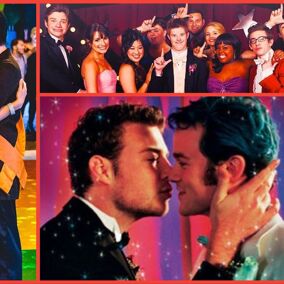

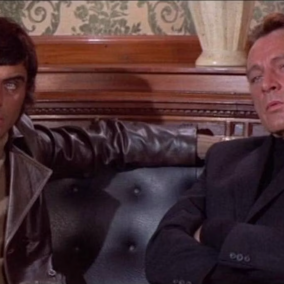


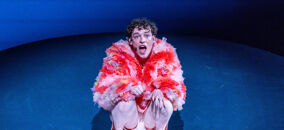
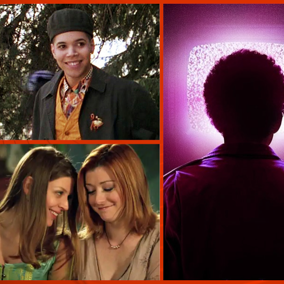
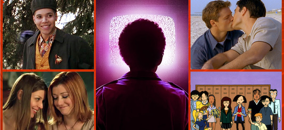


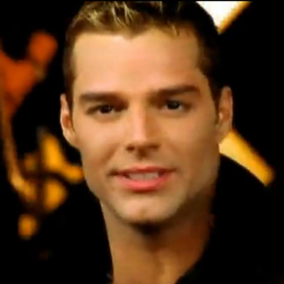
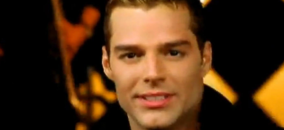


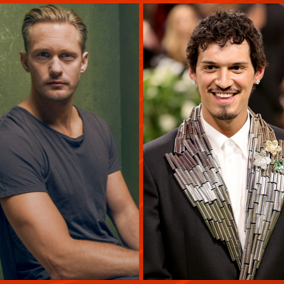
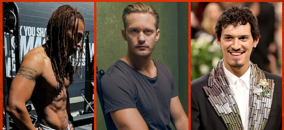
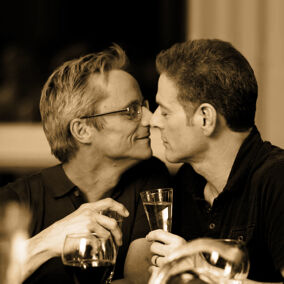

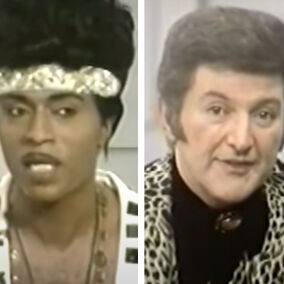
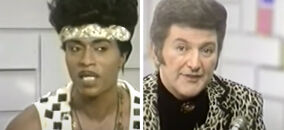
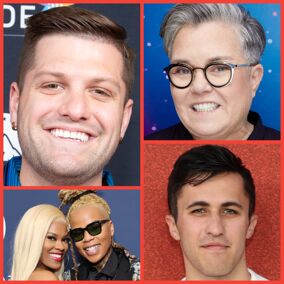
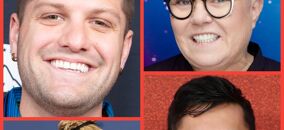
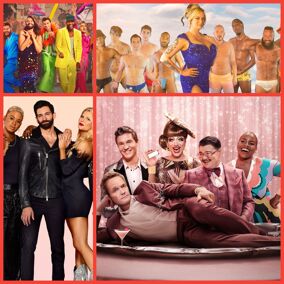
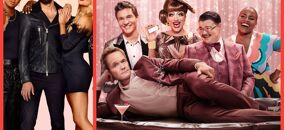
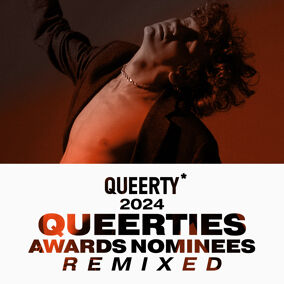
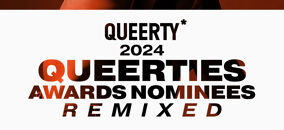


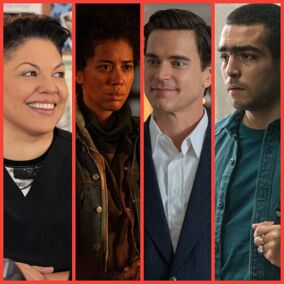
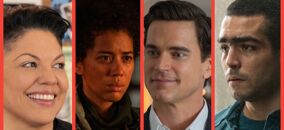
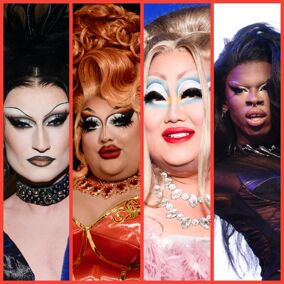

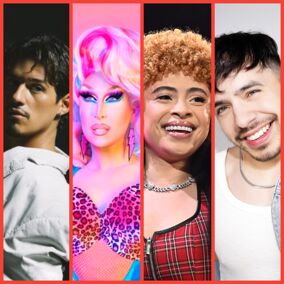
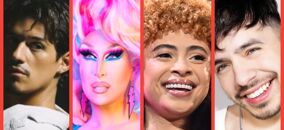




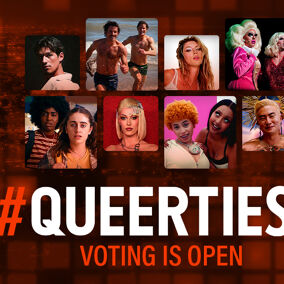
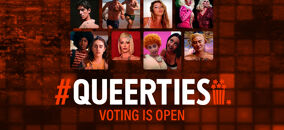








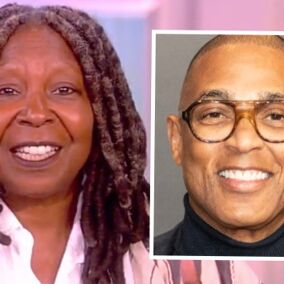

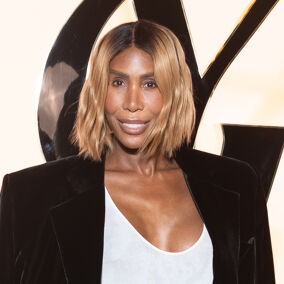
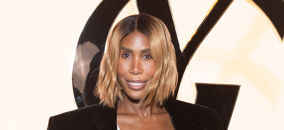



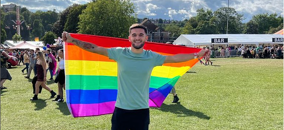
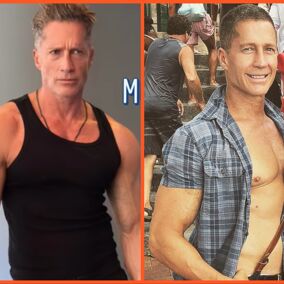
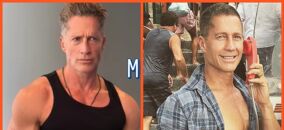




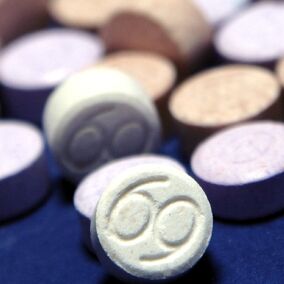





Lanjier
Me and my friend Bobby Stern used to mock spinning around and turning into Wonder Woman. I guess I had clue. Around that time I used to love pretending to be Lauren Bacall selling High Point Coffee. http://www.youtube.com/watch?v=wuyuiI5uDns
Kieran
I don’t know, growing up I loved fire trucks and playing cowboys and indians in my back yard ….and I still turned out gay.
nautilusjv
@Kieran: Hey Kieran, Besides my doll house and Planet of the Apes dolls etc., I also play with tanks and army men. I was fascinated by tanks and read obessively about World War I and II. Gender unfortunately is a rigid binary relational system. Something is feminine because it is not masculine, not because something about dolls is inherently feminine. It is just the way the dominant fiction in which we live has set things up.
Best, Kelly T Keating
Ian
I consider my crowning achievement of childhood was when I precociously said at around eight yrs old to my mom when I found the above pictured Wonder Woman doll at a local Sears, “Are you saying that I can’t have a woman as a role model, she’s a super hero action figure, not a Barbie!” My mom then begrudgingly allowed the purchase of my Wonder Woman doll/action figure 🙂
Becky
I had one barbie and I got so bored with it I threw it out of a window…
My little brother and I would get up at 6, and make enourmous Brio trainsets or K-Nex cars before school, then play with them when we got home.
He thought I was the best big sister ever B)
dvlaries
The one doll I remember having and loving was a pull-string talking Bugs Bunny, got for Christmas when I was either 6 or 7. I think I lasted maybe six months before I couldn’t resist surgery on him to examine the mechanical works that gave him a voice.
But steam-shovels, cranes and trains were my greater fascination. Only much later did I understand their phallic symbolism.
As for Shatner, one needed not turn into an eventual hard-core Trekkie to appreciate the gifts there. In any episode where he stripped to the waist, every pair of teenage gay eyes stopped blinking or straying.
WF
Thanks, Kelly! Hope to see more posts in the future. Unfortunately, my parents rebuked me for playing with dolls as a child, but once I came out to them, they had the “ahhhh, it all makes sense” moment. LOL 🙂
dvlaries
I was too late for Wonder Woman, but in what I consider the most suggestible years -11 to 14- my female role model was Samantha Stephens.
She was a character who had to hide who she really was from the entire world, a world of people who held nasty, often grotesque notions about who and what witches were.
In Elizabeth Montgomery’s sure and talented hands, Samantha shattered every one of those ugly prejudices in a single personification. She was self-possessed, confident, full of humor and would not be bullied either in the mortal world or from her own group. She made her own choices and didn’t worry if they conformed to anyone’s liking, even her exasperated parents.
The show didn’t stop there. It made clear too that witches are not always at their peak, like Samantha and her cousin Serena. While Endora would have been a pill of a mother in law even without magic, Bewitched also made clear witches continue past their prime, and sometimes faltering in power (Esmerelda, and especially Aunt Clara, essayed by the incomparable Marion Lorne.) They also came young and vulnerable (Tabitha), needing protection and made to understand they are ‘living in a world that doesn’t understand our kind‘.
The flamboyance of the show’s most prominent warlocks -Maurice, Dr. Bombay and Uncle Arthur- can leave little doubt the show was in on its own gay appeal.
All that, and Bewitched was almost unfailingly, riotously funny, and frequently very romantic and tender, especially in the early Dick York years.
Alice D'Addario
Anyone who thinks that children are uncomplicated and incapable of experiencing moments that consciounsly define and shape them should be required to read this piece. It’s brilliant!
christopher di spirito
My partner of 17 years loves collector dolls.
Dolls from the movies and from TV. He has a collection of Lucy, Cher and Liz Taylor dolls. He’s also as butch as Rosie O’Donnell and a total top. A love of dolls is no indicator of a man’s masculinity.
Personally, I think it’s a bit peculiar but whatever?
puncturedbicycle
A fascinating window into authentic childhood thoughts and feelings, secrecy and subversion. Love this post!
clark
My sisters had the original Barbie and Ken dolls, followed a little later by Midge and Allen…..I had a GI Joe doll (allowable). Well, don’t you know, GI Joe and Ken used to go on loooong drives in the Barbie car! Eventually they took an apartment with Allen, leaving Barbie and Midge to live in the Dreamhouse (which I naturally decorated to perfection!).
carsen tyler
Growing up I gave my Barbie dolls crew cuts and made tanks out of my K’nex (my dad let me have those because he wanted me to be an engineer) and played war versus my cousins. But what I really wanted was some X-men action figures, especially a Wolverine. Never got them, but now I have a huge collection of Doctor Who action figures, they pay for themselves oddly enough. I buy two Comic-Con exclusives, fence one while the Convention is still going on, get a good $400 to $1000 for that one and I have money to buy all the regular ones I want. But I still look for that Wolverine that was around when I was a kid.
Uppity
What a great piece. Your crushes on William Shatner and Charlton Heston remind me of the all the 70s guys I had crushes on, and the shows in which I saw them: a shirtless Robert Conrad in Battle of the Network Stars, Michael Beck’s abs in The Warriors, a naked Jan Michael Vincent cornered by thugs in the shower in Defiance, the dark-haired lead in the TV series Planet of the Apes (for whom a shirtless scene seemed to be contrived for every week) and Tarzan actor Mike Henry. Oh the list could go on …
Stephen
I grew up the middle one of five brothers. I spent childhood playing with the neighbourhood girls and their Barbies (Ken was the obvious favourite). Although I did like the “allowable” boys dolls that were GI Joe and that ilk, that made their way into my house. Never having played war with my brothers, I was always trying to figure out how to get GI Joe to “capture” the enemy (Ken, which I did not have) and then “torture” him into revealing “secrets”.
I didn’t realize until my teens when I started getting those ‘boy crushes’ (Steve White in high school, yum) that I was different in ‘that way’.